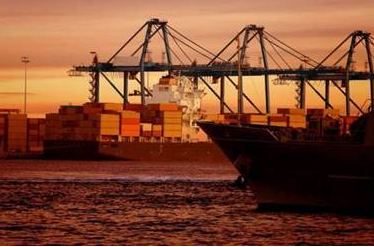
AIR FREIGHT
Starting mid-February, volumes transported by air freight from China rose again, dragging rates with them.
The tonnage increase reached around 10% from one week to the next, a sign of a market that is doing well.
According to IATA, demand for air freight increased by a “remarkable” 18.4% year over year already in January.
Therefore, a significant price rebound is taking place from China (including Hong Kong) to Europe and the United States.
The current strong e-commerce dynamic, driven in particular by the Chinese giants Temu and Shein, largely explains this level of activity in the air, as well as some overspill from the ocean due to the Red Sea shipping crisis: shipping transit times between Asia and Europe have been considerably increased since ships are going round Africa via the Cape of Good Hope to avoid the Red Sea.
Some goods needing shorter transit times may have been switched to air transport.
SEA FREIGHT
Risk is the “new normal” for the global ocean shipping industry that handles 80% of global trade, as pressure from geopolitical tensions, rising protectionism and climate change mounts.
Beyond the Red Sea attacks, half of the world’s population is going to the polls this year, which may bring more protectionist policies that include tariffs on major exporters, such as China.
That trend, coupled with climate change-related costs, such as routing around the drought-stricken Panama Canal or the European ETS and related surcharges , could fuel inflation that threatens a hoped-for “soft landing” for the global economy.
As a matter of fact, the Red Sea attacks already have spurred cargo delivery disruptions and soaked up excess vessel capacity – raising shipping costs in what has been a sluggish cargo volume recovery.
Container ship owners have been diverting vessels away from the Red Sea and the nearby Suez Canal trade shortcut that handles as much of 30% of the world’s container cargo – including clothing, furniture, auto parts, chemicals, machinery and coffee.
The longer, alternate route around Africa’s Cape of Good Hope adds five days or more to trips and as much as $1 million in one-way fuel costs: the number of container ships diverted to Cape Town on East-West routes has rebounded recently, reaching a record level of 403 vessels and 5.14 million TEUs.
Spot shipping rates soared, doubling or tripling on some journeys, and remain elevated.
USA
After the accident caused by the “Dali”, operated by Maersk, the port of Baltimore will remain paralyzed for a while.
However, with 1.1 million TEUs processed in 2023, its closure will have a significant impact, forcing companies to turn to neighboring ports.
Some port congestion is to be expected.


